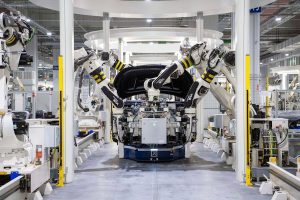Alteryx Updates its Analytics with Machine Learning Assisted Modeling

Alteryx is a self-service data analytics platform founded in the year 1997. It is mainly used for data discovery, data preparation, analytics, deployment, etc. Alteryx contains 4 main components – Alteryx Designer, Alteryx Server, Alteryx Connect, and Alteryx Analytics Gallery. To know more about Alteryx, go through our Alteryx training course.
The Alteryx Intelligence Suite of the Alteryx Designer is a data scientist’s wonderland. That is where all the data magic happens. Alteryx always launches new features for Alteryx Intelligence Suite that help users work efficiently with the Alteryx Designer. Alteryx has released an update, Alteryx version 2020.2, which includes a machine learning feature called Alteryx Assisted Modeling. This feature release has created a lot of traction and many users have already started talking about it in the Alteryx Community. Go through this post to know what the Alteryx Assisted Modeling buzz is about.
What is the Alteryx Intelligence Suite?
Intelligence Suite is an additional functionality of Alteryx Designer. It is used for performing text mining, machine learning, and Natural Language Processing (NLP) on your data. Text pre-processing, sentiment analysis, word cloud, image to text, and optical character recognition are some of the text mining features that the Intelligence Suite offers. It allows users to unlock the true value of their data. It helps in identifying hidden insights in your data.
Intelligence Suite helps users in building effective machine learning models without code or a data science degree. It also provides pre-trained algorithms that are ready to deploy. Transformation, classification, regression, and prediction are some of the machine learning features that the Intelligence Suite offers.
Alteryx Assisted Modeling
The new Assisted Model feature is built with the intent to amplify the skills of developers. It simplifies the machine learning experience in Alteryx Designer. Many users might not have the knowledge required to create complex machine learning models. So, Alteryx has made the machine learning model building process transparent and keeps the human in the loop.
To generate an efficient model, the Assisted Modeling uses two techniques – Gini Impurity and Goodman-Kruskal Tau. These techniques identify the best features for the model. The Assisted Modeling runs multiple models on your data in parallel. It then shows the list of models that were run on your dataset along with metrics. You can compare the metrics and pick the model that works best for your dataset. You will be able to view the raw Python code of your model. You will also be able to edit the Python code through the graphical interface.
How does Assisted Modeling vary from Auto Modeling?
Auto Modeling is a fully automated process for creating a machine learning model. Users will have minimal to zero control over this process. All the user has to do is select the dataset and choose the feature that they want to predict. The rest will be handled by the Auto Modeling method. The final output will be displayed with the best model that suits your dataset.
Assisted Modeling gives control to the user in every step of the execution pipeline. Users will be able to select the data cleansing methods, choose algorithms to run, etc. It shows the pipeline flow in a graphical way or as bare code. It provides a detailed explanation of what it is doing and why it is doing along each step of the way. You can view the explanation by simply clicking through the default options.
Steps involved in Assisted Modeling
Assisted Modeling uses CRISP-DM (Cross Industry Standard Process for Data Mining) methodology for building data pipelines. It guides the users through a step-by-step process of selecting a target, setting data types, cleaning up missing values, choosing features, and selecting the algorithm.
Step 1: Select the target and machine learning method
When you import your data and connect it to the Assisted Modeling tool, you will get all the features of the dataset as available targets. You can select the feature that you want as a target, and the Assisted model will automatically select a machine learning method that suits the target.
Step 2: Select the automation level
At this level, you can choose from two options – Step-by-Step or Automatic. If you select automatic, it proceeds to create the pipeline, and you can view the output on the dashboard. If you select Step-by-Step, it will take you through the next steps.
Step 3: Set data types
The Assisted Modeling shows the recommended data type in the Data Type column for all the features. If you feel that it has defined the wrong data type, you can correct it.
Step 4: Clean up missing values
If any feature of your dataset has missing values, it shows a recommended method for cleaning up missing values. You can use that method, or you can use any other method that you want.
Step 5: Select features
It then shows how well the features of your dataset contributes to the target. You can select the features that you want to use as input.
Step 6: Select algorithms
It then provides a set of algorithms that you can choose from. You can select the algorithm that you want to run on the dataset based on the pros and cons that it shows for the algorithms.
The final output of the selected algorithms will be displayed on a leaderboard. You select one algorithm to add to the canvas.
Conclusion
Assisted Modeling is really a great process for the non-data scientists to build models and know what is happening at each step of the pipeline. The user interface is very intuitive, and the component is very easy to use too. If you have an Intelligence Suite license along with your Alteryx Designer license, you can start working with the Assisted Modeling. If you don’t have the Intelligence Suite license, don’t worry, Alteryx provides a trial version of Intelligence Suite that can be used either on cloud (for 90 minutes) or on-premise (for a month). So, go ahead and try creating a machine learning model with the Assisted Modeling feature.






